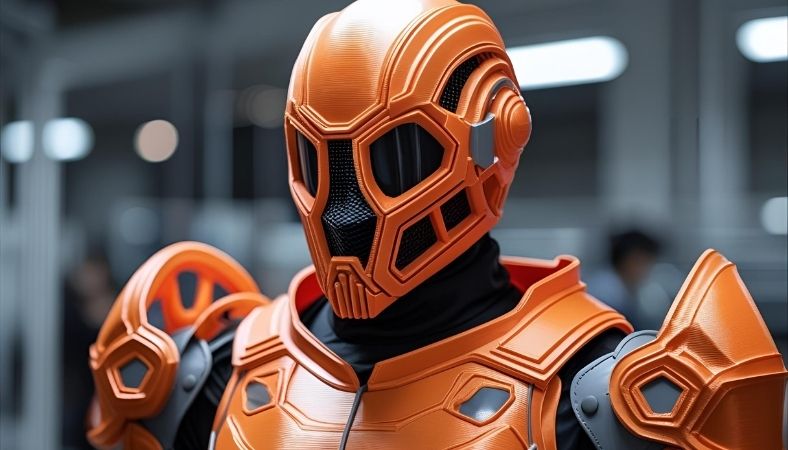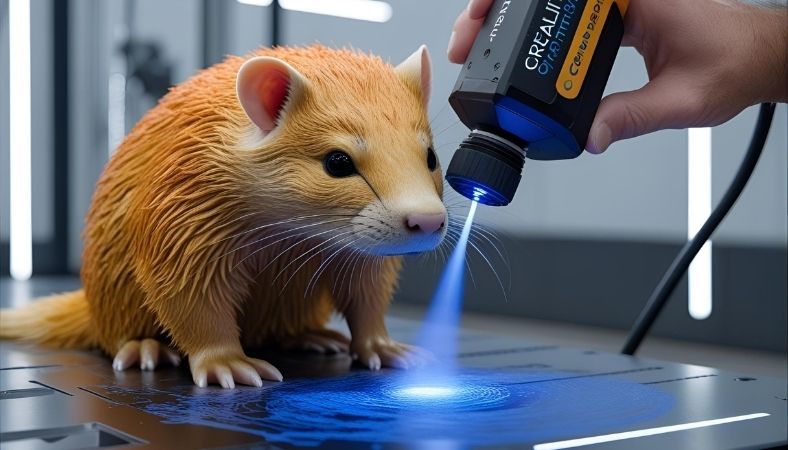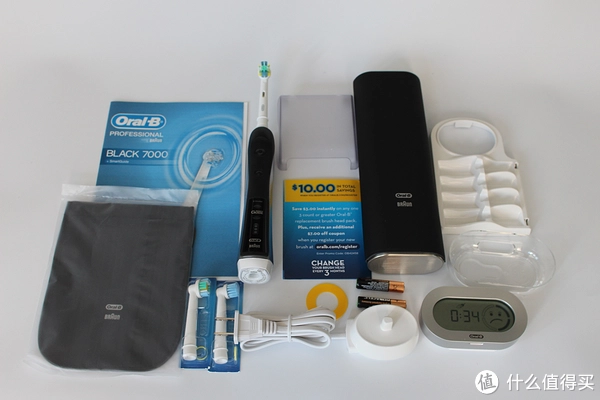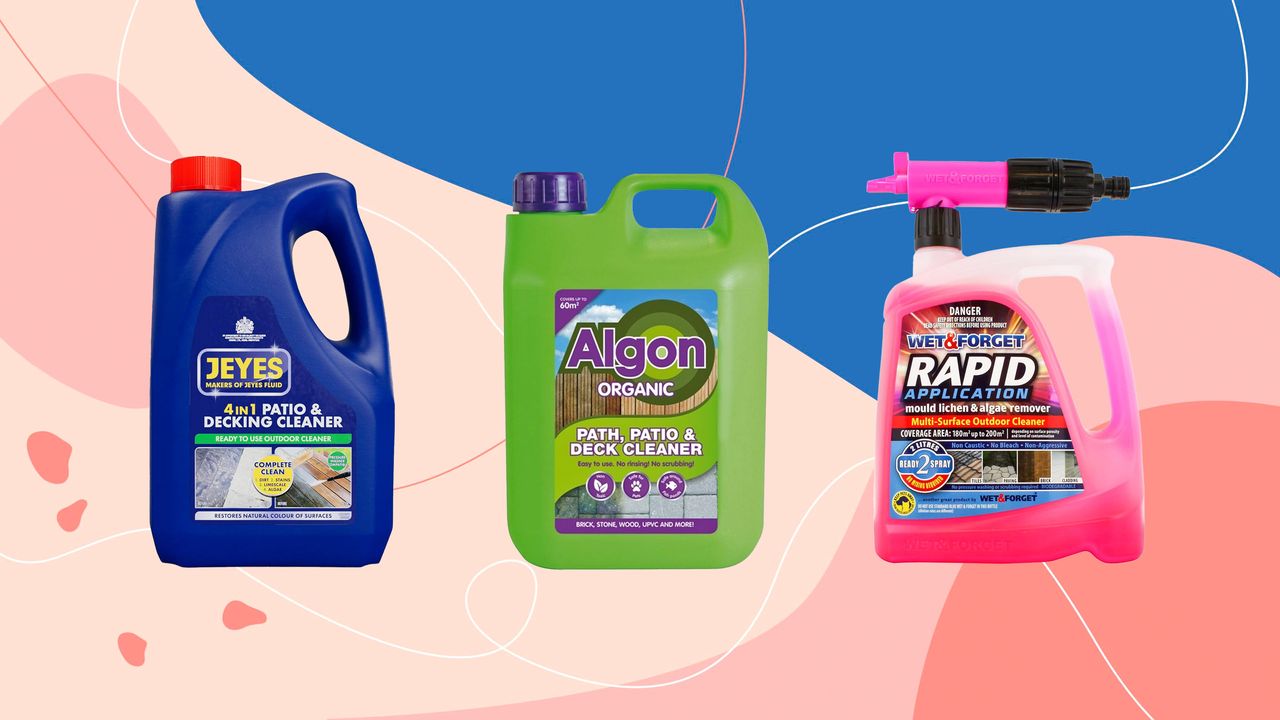Important Points:
- Utilize the capabilities of 3D printers in the development of intricate costumes and cosplay.
- Examine the advantages and disadvantages of materials such as PLA, ABS and resin, to assist you in your selection for the particular project.
- Understand the techniques of post-processing, including sanding, painting and assembly, to assure every printed model has an immaculate final appearance.
- Learn about easy 3D printing models for beginners and also get insights from professionals on overcoming recurring problems.
- Learn the functions and price of various 3D printers to understand what you really need in terms of time and money.
3D Printer for Costumes: A New Era in Cosplay Creation
The art of cosplay has grown in recent years, from attending fantasy conventions to its showcases online. For a lot of people, competing in such events might sound like a lot of work, but 3D printing technology has come as a blessing for people who want to create intricate and exquisite costumes. With the use of 3D printers, one can create highly complex configurations without spending years of time and skills on materials like foam and fabric.
3D printers open up a whole new world of opportunities for curious novices and experienced cosplayers alike. From the ease of your home, envision 3D printing a fully detailed helmet, or an armor set that is tailored to your body. In this article, we explore how a 3D printer for costumes can be your new best ally for elevating your cosplay to new heights.
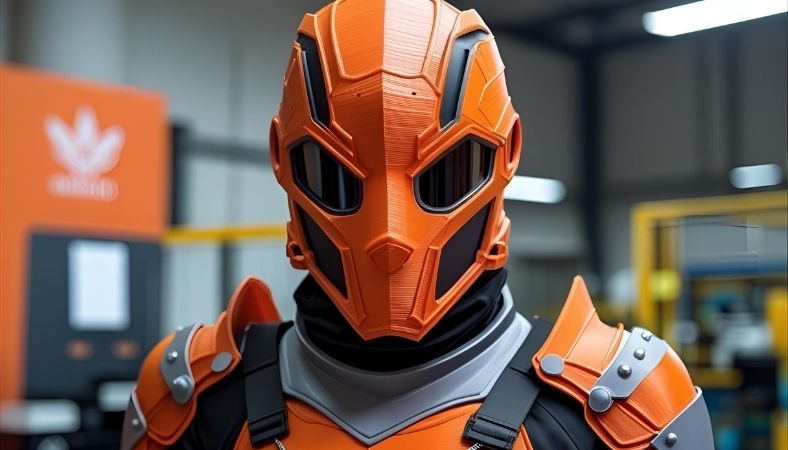 Why 3D Printing is Best for Costumes?
Why 3D Printing is Best for Costumes?
For far too long, the world of cosplay was constrained by the imagination of its enthusiasts. The individuals with the requisite mechanical aptitude and technical skills to use traditional tools and methods would dominate the domain, but that is not the case anymore after the advent of 3D printers. Let’s go through a few more reasons why 3D printing is best for costumes:
Precision and Customization
When it comes to the level of detail to be incorporated, 3D printers present cosplay enthusiasts with unmatched accuracy and precision. Are you in need of a detailed helmet? 3D printers can bestow intricate filigree. Since you do not need to rely on carving or sculpting by hand, it is way easier for you to achieve your design goals with each and every costume. Best of all, it is fully customizable.
Envision that you are printing a cosplay piece from a fantasy movie. 3D printing enables you to resize and alter the fragments to your body so they fit perfectly, and no more guessing and adjusting is needed after crafting.
Speed and Efficiency
If you are creating props, ornaments, armor, or any detailed accessories, it will take a considerable amount of time to create a traditional costume. There is a lot of work that goes into costume-making and with traditional methods it is slow and tiresome, you can leverage 3D printing; with the right printer, you can create costume components within a few hours, something that would take days or weeks with traditional methods.
As an example, a detailed chest plate can take up to 24 hours to 3D print, where it would take weeks to shape, sculpt, and paint foam or plastic to achieve the same result.
How to Choose the Right 3D Printer for Costumes
Now that you understand why 3D printing is a valuable asset for costumes, let’s talk about choosing the right 3D printer for costumes.
Think About Your Budget
When it comes to purchasing a 3D printer, your financial plan is of primary importance. There are several budget-friendly entry-level models that are affordable while at the same time providing excellent quality prints, as well as advanced models for professionals who need to print large, high-quality designs.
- Entry Level 3D Printers (e.g., Creality Ender-3 S1): Most of these models are fantastic for starters, as well as for cosplayers working on a budget. It is possible to obtain robust and dependable prints without spending a lot. They have a lower build volume, which is helpful for smaller costume parts like helmet and gauntlet.
- Professional 3D Printers (e.g. Phrozen Sonic Mega 8K S): They are pricier but capable of high quality prints alongside large build volumes which is useful for intricate larger costume parts like armor and wings.
Build Volume and Print Resolution
For cosplayers and costume makers, build volume and print resolution are very important. For larger parts like helmets and armor, a printer with a large build volume as the pieces to be created would need to be fitted. For full body costumes, a bigger build size would be required (e.g., 300*300mm and above).
Print accuracy is also important. For smaller components, higher resolution printers, such as the Phrozen Sonic Mega 8K S, are capable of producing detailed prints. Conversely, bulkier parts that are less detailed do not require as much precision, allowing lower resolution printers to be used.
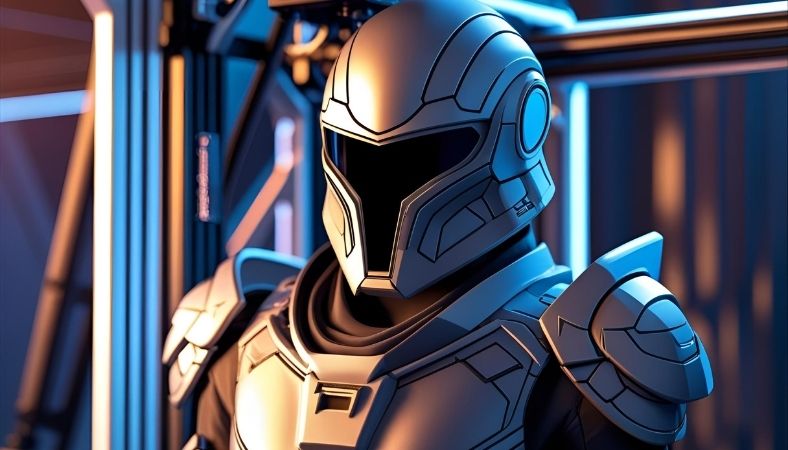 3D Printing Cosatumes: Materials to Consider
3D Printing Cosatumes: Materials to Consider
The selection of materials for 3D printing costumes is essential, as it can make or break the project. Every material has its distinct functionalities, and knowing them can help you make the most informed decision for your project.
PLA (Polylactic Acid)
PLA is one of the most common 3D printing filaments used by hobbyists. It is simple to work with, eco-friendly (biodegradable), and very good for inflexible sections of the costume, such as armor, helmets, or props.
- Pros: Widely accessible, reasonable price, great for novices, and simple to work with.
- Cons: Not very reliable for parts that are flexible or require bearing significant stress.
ABS (Acrylonitrile Butadiene Styrene)
With its enhanced strength and flexibility, ABS is a superior option for parts that require durability, such as armor or weaponry. It is also commonly used in costume pieces, as these are often subjected to heavy wear and tear over the course of a long day at a convention.
- Pros: STRONGER AND MORE FLEXIBLE THAN PLA. CAN WITHSTAND HEAT AND IMPACT.
- Cons: Releasing fumes that can be harmful, a heated bed is mandatory for using this type of printer.
Resin
Using resin makes for sharp, well-defined prints, making it a great option for those looking for specific details. It is often utilized for jewelry, helmets, or other miniature models that require precision. Nonetheless, resin printing is not the most beginner-friendly method because it is more complex in the cleaning and post-processing stages.
- Pros: Great for detailed and high-precision prints, small props, and accessories.
- Cons: Higher in price, time-consuming and complex in cleaning, requires additional time and expense for post-processing, and messy.
3D Printing Movie Costumes: Why is it Difficult and how to Simplify the Process
3D printing has its advantages, but challenges do come with it. For instance, the most common ones that we will be looking at include:
Print Failures and Warping
This is the most common yet the most annoying issue for 3D printing costumes; a print is either too small or too large. Warping occurs when the part’s edges are lifted off the bed, so the print is either too small or too large, causing.
How To Fix It: Proper leveling of your bed should eliminate this problem. Using hairspray or glue sticks as an adhesive should assist with this problem. Furthermore, using a heated bed with specific materials such as ABS can help with adhesion.
Long Print Times
3D prints can occasionally require several hours or even days of machine time for completion. This is especially common with larger prints. While the processes cannot always be accelerated, the wait time can be reduced through part printing, where components are printed separately before final assembly.
Pro Tip: Larger costume pieces can be broken down into smaller, more manageable sections for individual printing before assembly.
Time Taxes
After your costume parts have been printed, the next steps are often to sanding, smoothing, and painting to provide a polished and professional appearance. Realistically, this step takes a good chunk of time, but is critical to provide a more authentic finish.
How To: Apply sanders to larger, flat parts. Use spray paint intended for plastics to provide a smoother finish.
Comparison of Traditional Methods for Making a Costume and 3D Printing.
Understanding where these benefits fall can be interesting, especially when comparing with foam crafting and sewing, where 3D printing is not as prevalent.
Financial Outlay and Duration
3D printing saves costs on foam, fabric, and glue, but purchasing a 3D printer comes with its own expense, which may be greater than foam, fabric, and glue combined. In conjunction with foam and fabric, glue and other materials would come at a lower price, which makes 3D printing a better long-term investment for those who plan on creating several costumes.
- Traditional Methods: Greater expense on materials, labor, and tools such as scissors, glue guns, and sewing machines. These do come at a greater price, making them extremely uneconomical.
- 3D Printing: Initially, a 3D printer comes at a greater long-term investment, but with practice, that printer turns into its own asset.
Post Processing: the printing is done to the costime Process
The true essence of creation takes form once the printer is done working its magic. For a 3D printer to create the magic of making costumes through the wears, a lot of hands-on work with the sanders and paint pens is required.
Smoothing and Sanding
Through time, each of the pieces of sand blends with the others to create a more exquisite and appealing look. For those wanting a neat and exquisite feel, the fragment pieces comprising the costume would require hours of cosigning for sand during the assembly stage.
Tools: For uniformity use of fine sand paper is a must and for large segments, use of a larger power of sand paper would be a lot more effective through the use sanders.
Painting Your Printed Cosplay Components
To enhance the realism of your printed parts, they require sanding followed by painting. To attain a consistent and resilient finish, use spray paints formulated for plastics or resins.
Tip: Apply primer first for better adhesion of the subsequently applied paint.
Conclusion: Are You Prepared to Cosplay with a 3D Print?
The world of 3D printing has dramatically transformed costume creation. With tailored costumes and reduced preparation time, this innovation is a game-changer for the cosplay community. No matter your experience level with 3D printing, be it a novice or expert, there is always an opportunity for refinement.
Actionable Tip: Begin With 3D Printed Cosplay Accessories
As a novice to 3D printing, start by designing smaller items like props or a costume helmet. With time, you will gain confidence and be able to design complex pieces like full bodysuits or armor. Remember, self-improvement is a journey, so keep honing your skills!
Armed with this knowledge for 3D printing costumes, you can dive into designing your fantasy cosplay. So, what are you waiting for?

